Yeh Jeevan hai – Basu Chatterjee
- K V Ramesh | kvr4060@gmail.com
Mainstream Hindi cinema, popularly called Bollywood, always has its stereotyped larger-than-life characters. The “hero” and heroine were usually “whiter than white”, while the villains were blacker than black. Nothing in between. The stories were largely formulaic with occasional flashes of innovation. That changed mainly in the late 1960s and through the 1970s due to “middle-of-the-road cinema”. The foremost exponents of this type of filmmaking were Gulzar, Hrishikesh Mukherjee, and Basu Chatterjee. Watching their films, we always get the feeling: “oh, that could be me. Or a person I know”.
Basu Chatterjee’s early days probably were hardly indicative of any intention that he would end up joining the glitz and glamour of “Bollywood”. Born in 1927 in Ajmer, Chatterjee’s early working days were as an illustrator and cartoonist for Mumbai newspapers. A stint as an assistant director to Basu Bhattacharya in Teesri Kasam (1966) followed. The outstanding soundtrack narrated and forwarded the story. This surely wasn’t lost on Chatterjee, who assisted in yet another musical blockbuster, Saraswati Chandra (1968).
However, things were changing, and “parallel cinema” was taking root. Chatterjee’s first directorial venture Sara Akash (1969) had the “parallel cinema” stamp. The film told the story of an unsuitable marriage. Its middle-class milieu was close to what Chatterjee had observed in his early years. The somewhat grim proceedings didn’t sit well with the audience.
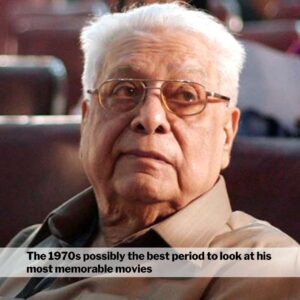 Three years later, Chatterjee broke through in the mainstream with the charming Piya Ka Ghar (1972). The film had the rising female star in the form of Jaya Bahaduri (Malti) and Anil Dhawan (Ram). Malti, who had grown up in a village with lots of space, is shocked to find herself married to a man who lives in a Bombay chawl with confined spaces. She has mixed feelings due to the severe lack of privacy. Though she may sing “Piya ka ghar hai, rani hoon ghar ki “, the severe restrictions, especially for a newly married couple, and how at times, privacy is “rationed” is shown in a bittersweet manner. Chawl life, something unique to Bombay, with its lack of privacy, and nosy yet helpful neighbors, was something most Bombay dwellers could relate to. Chatterjee was noticed, and the film was a moderate hit.
Three years later, Chatterjee broke through in the mainstream with the charming Piya Ka Ghar (1972). The film had the rising female star in the form of Jaya Bahaduri (Malti) and Anil Dhawan (Ram). Malti, who had grown up in a village with lots of space, is shocked to find herself married to a man who lives in a Bombay chawl with confined spaces. She has mixed feelings due to the severe lack of privacy. Though she may sing “Piya ka ghar hai, rani hoon ghar ki “, the severe restrictions, especially for a newly married couple, and how at times, privacy is “rationed” is shown in a bittersweet manner. Chawl life, something unique to Bombay, with its lack of privacy, and nosy yet helpful neighbors, was something most Bombay dwellers could relate to. Chatterjee was noticed, and the film was a moderate hit.
Then started a flood of films that made the 1970s possibly the best period to look at his most memorable movies, for which he was best remembered (even though he worked right to the 21st century).
1974 brought Us Paar, a somewhat “usual” story of a city rich boy falling for a poor village girl who is also pursued by a local suitor. S.D.Burman’s superb soundtracks were wasted and didn’t fit the larger public consciousness. “Ai mere man main hu magan”, “Mitwa piya maine kya kiya”, “Pyara hindola mera”, and the teasing Lata number “Ye jabse hui jiya ki” escaped the kind of fame that they deserved.
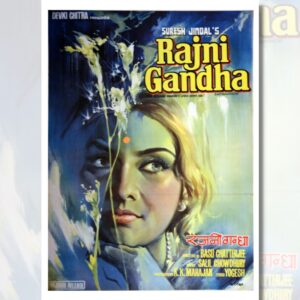 In 1974, Rajnigandha was released, and the cliched saying “the rest is history” holds good. The audience could relate to an unusual “hero”, Sanjay (Amol Palekar), who was unpunctual, perennially complained about his superiors, and indifferently wooed his lady love Deepa (Vidya Sinha). On a visit to Bombay, she is attracted to the “organized” and “disciplined” former college mate Navin (Dinesh Thakur). There were only two songs by Salil Chowdhury, but both hit the mark with the public and were well picturized in showing Deepa’s dilemma. Mukesh’s “Kayi baar yoonhi dekha hai” and Lata’s “Rajnigandha phool tumhare” explored Deepa’s confusion in being torn between the two men in her life. The story was told without melodrama, and the film was successful, with a good run in many cities. Like Alfred Hitchcock, Chatterjee also played cameo parts, starting with Rajnigandha where he played a viewer in the cinema, constantly irritated by Sanjay’s nonchalant comments.
In 1974, Rajnigandha was released, and the cliched saying “the rest is history” holds good. The audience could relate to an unusual “hero”, Sanjay (Amol Palekar), who was unpunctual, perennially complained about his superiors, and indifferently wooed his lady love Deepa (Vidya Sinha). On a visit to Bombay, she is attracted to the “organized” and “disciplined” former college mate Navin (Dinesh Thakur). There were only two songs by Salil Chowdhury, but both hit the mark with the public and were well picturized in showing Deepa’s dilemma. Mukesh’s “Kayi baar yoonhi dekha hai” and Lata’s “Rajnigandha phool tumhare” explored Deepa’s confusion in being torn between the two men in her life. The story was told without melodrama, and the film was successful, with a good run in many cities. Like Alfred Hitchcock, Chatterjee also played cameo parts, starting with Rajnigandha where he played a viewer in the cinema, constantly irritated by Sanjay’s nonchalant comments.
Chhoti Si Baat (1976) repeated the “hit pair” of Amol Palekar and Vidya Sinha. The charming story was about a diffident timid Arun Pradeep (Amol Palekar) ardently pursuing Prabha Narayan (Vidya Sinha) but unable to take it ahead. At the same time, a more confident suitor Nagesh (Asrani), consistently puts Arun down. Arun always fantasizes about winning Prabha, most famously while watching a film wherein, he sees the onscreen couple Dharmendra and Hema Malini singing “Jaaneman Jaaneman tere do nayan” replaced by himself and Prabha. “Na jaane kyun hota hai zindagi ke saath” has Prabha wondering where Arun has vanished (he is getting training from a retired Army Colonel). “Ye din kya haaye” sees Arun turning the tables on Nagesh. More than the songs, it was the characters of a tongue-tied Arun, who changes into a confident man, and the zany comedy of Colonel Julius Wilfred Nagendranath Singh. (Ashok Kumar being delightfully comic) that struck a chord with the audience.
As with an announcement of a “Hrishikesh Mukherjee film” or a “Gulzar film”, Basu Chatterjee’s name guaranteed that the film would definitely generate “audience pull”. A flood of films followed that proved this point. Though the music was not the main point in these films, often, the music was a hit and forwarded the story.
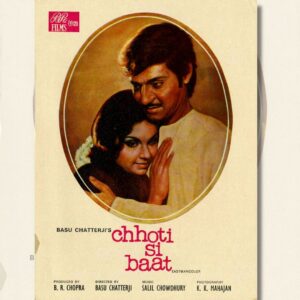 Chitchor (1976) was yet another Amol Palekar “starrer” about a junior officer, Vinod, being mistaken for a senior engineer by a family that fawns over him as a suitable prospect for their young daughter Geeta (Zareena Wahab). The duo gets attracted to each other when he teaches her music. The charming story and the music were liked by the masses, and the film was a hit. Ravindra Jain, the “house composer” for Rajshri Productions, lived up to his promise with “Jab deep jaley aana”, “Tu jo mere sur me”, “Gori tera gaon bada pyara’, “Aaj se pehle aaj se zyada”, all of which were hits.
Chitchor (1976) was yet another Amol Palekar “starrer” about a junior officer, Vinod, being mistaken for a senior engineer by a family that fawns over him as a suitable prospect for their young daughter Geeta (Zareena Wahab). The duo gets attracted to each other when he teaches her music. The charming story and the music were liked by the masses, and the film was a hit. Ravindra Jain, the “house composer” for Rajshri Productions, lived up to his promise with “Jab deep jaley aana”, “Tu jo mere sur me”, “Gori tera gaon bada pyara’, “Aaj se pehle aaj se zyada”, all of which were hits.
Swami (1977), based on a Sarat Chandra Chattopadya story, was about a woman married off in an arranged marriage to an older man while she preferred a young neighbor. Her gradual awakening and standing up for her husband for what was “right” formed the story’s core. The music by then-new entrant Rajesh Roshan, who was only three years old as a composer in the film industry, was fresh and jelled well with the theme. The classical thumri “Kaa karun sajni aaye na baalam” found a new audience and was a bona fide hit. Though “sung” by Mini’s brother-in-law, it really spoke of her dilemma. Being caught between her growing affection and respect for her husband and her past lover. Once again, the film did above-average business, given that onscreen violence was increasing, and the audience wanted something they could relate to. The other songs, “Pal bhar me ye kya ho gaya”, “Yaadon mein woh sapnon me hai”, were more like background songs. Trivia: since the film was produced by Hema Malini’s mother Jaya Chakravarthy, there was a “guest appearance” by Dharmendra and Hema Malini singing a duet “Bhag jaaongi bhag jaaongi”, which again spoke of Mini’s dilemma – running away with her lover or staying back to support her husband. The film won the Filmfare Best Director award for Basu Chatterjee.
The second release of 1977, Priyatama, had mainstream stars Jeetendra and Neetu Singh. The delightful story was about a couple whose romantic thoughts of marriage. Slowly and steadily fall apart, when faced with the realities of marriage, culminating in their filing for divorce. Once again, Rajesh Roshan rose to the occasion and delivered a lovely soundtrack. The film titles had Asha singing “Chham chham barse ghata” while Neetu Singh enjoyed and got deliberately wet in the Bombay rains. However, the Kishore song “Koi roko na deewane ko” had more airplay, showing the lead couple getting attracted to each other while their friend (Rakesh Roshan) sang to the audience about their love story. The three other songs, “Mai jo bolun haan to haan”, “Na na jaane doongi”, “Tere bin beete din”, though good, didn’t stand a chance against Kishore’s full-throated singing.
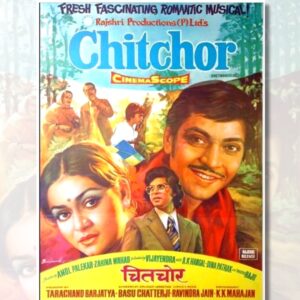 Basu Chatterjee should have scored a hat trick in 1977 with Safed Jhooth, but that wasn’t meant to be as the film did below-average business. Vinod Mehra and Mithu Mukherjee were the newcomers who were fooling Mehra’s boss Ashok Kumar to go on leave. One lie after another follows. Funny, but somehow it didn’t hit the bullseye (like Gol Maal, which also had one lie to cover up another and so on).
Basu Chatterjee should have scored a hat trick in 1977 with Safed Jhooth, but that wasn’t meant to be as the film did below-average business. Vinod Mehra and Mithu Mukherjee were the newcomers who were fooling Mehra’s boss Ashok Kumar to go on leave. One lie after another follows. Funny, but somehow it didn’t hit the bullseye (like Gol Maal, which also had one lie to cover up another and so on).
1978 was another hat trick year for Basu Chatterjee with three releases with mixed fortunes. Tumhare Liye (1978) was a tale of reincarnation, had listless performances from Sanjeev Kumar and Vidya Sinha, and tanked at the box office. Yet it had a superb Lata solo tuned by Jaidev, “Tumhe dekhti hoon to lagta hai aise”, wherein the heroine Vidya Sinha beseeches the soon-to-be monk Sanjeev Kumar not to leave her.
Dillagi (1978) was yet another delightful story of a battle of the sexes in an “all-women’s college” between a strict Chemistry Professor (Hema Malini) and a Sanskrit teacher (Dharmendra). While the former beliefs in strict discipline, the latter encourages the free expression of emotions thanks to his love of various Sanskrit classics. Opposites attract and the song “Mai kaunsa geet sunaun” shows the growing attraction between the two professors, though it is not “sung” by the heroine. The songs, again by Rajesh Roshan, weren’t much of a hit, but the lead pair’s star charisma (and rumors of their real-life romance) ensured that the film was a hit.
Khatta Meetha (1978) was a super hit and an unusual film, about a Parsi family. Usually, non-Hindi-speaking communities, such as South Indians, Bengalis, Parsis, etc were all figures of fun in mainstream Hindi cinema and provided comedy for the audience. This was the first time all the lead and side characters were from the tiny Parsi community. Loosely inspired by the 1968 Hollywood film “Yours Mine and Ours”, which told the story of a widow and widower with grown children deciding to get married, Khatta Meetha “Indianized” the story and showed the struggles of Homi Mistry (Ashok Kumar) with three grown sons, marrying Nargis Sethna (Pearl Padamsee) with a grown son and daughter. The main challenge is from their grown children who can’t accept the union but slowly start accepting each other and their parents.
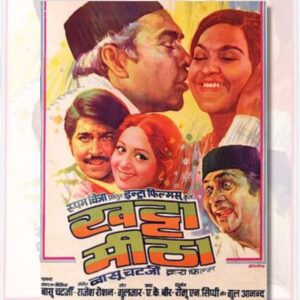 Rajesh Roshan rose to the occasion magnificently, and almost all the songs were massive hits. “Ye jeena hai khatta meetha” spoke about the bittersweet fruits of life. “Roll roll makonisa” had the Mistry family moving themselves and their belongings to the Sethna household and singing about their travails during the journey. “Thoda hai thode ki zaroorat hai” had the forcibly united children dreaming their individual dreams. The funniest song was “Mummy o mummy, tu kab saas banegi”, wherein bachelor Dara (Deven Varma) beseeched his mother (Piloo Wadia) to allow him to marry as per his liking than hers. “Freny O Freny” sees the now united family singing and dancing at Freny’s marriage to Dara and feeling the loss of Freny, whom they used to tease earlier. The only Lata solo, “Tumse mila tha pyar”, though melodic, somehow didn’t register with the public. The film was a box office hit and it seemed that Basu Chatterjee had found the perfect balance between human stories and mainstream Hindi cinema.
Rajesh Roshan rose to the occasion magnificently, and almost all the songs were massive hits. “Ye jeena hai khatta meetha” spoke about the bittersweet fruits of life. “Roll roll makonisa” had the Mistry family moving themselves and their belongings to the Sethna household and singing about their travails during the journey. “Thoda hai thode ki zaroorat hai” had the forcibly united children dreaming their individual dreams. The funniest song was “Mummy o mummy, tu kab saas banegi”, wherein bachelor Dara (Deven Varma) beseeched his mother (Piloo Wadia) to allow him to marry as per his liking than hers. “Freny O Freny” sees the now united family singing and dancing at Freny’s marriage to Dara and feeling the loss of Freny, whom they used to tease earlier. The only Lata solo, “Tumse mila tha pyar”, though melodic, somehow didn’t register with the public. The film was a box office hit and it seemed that Basu Chatterjee had found the perfect balance between human stories and mainstream Hindi cinema.
1979 was a year of mixed successes with seven releases and had highs and lows for Chatterjee.
Chakravyuh brought the impressive star power of Rajesh Khanna, but the loose adaptation of The Thirty-Nine Steps, about an innocent man receiving information about an assassination plot and then being chased by the villains, didn’t strike a chord with the audience. Rajesh Khanna and only one song? Neetu Singh in just two scenes? Rajesh Khanna is always on the run and using only his wits to escape the villains and not bashing them up? No wonder the audience gave it a massive thumbs down.
Prem Vivah told the story of a young sister matchmaking for her unmarried elder sister with a famous personality. The only trouble? The older man falls for the younger sister! Serious potential for a sublime comedy, but somehow the film just went and came and didn’t register with the public consciousness.
Do Ladke Dono Kadke is about two small-time thieves “kidnapping” a child while being chased by big-time crooks who want to kidnap the child. Once again, the film was average, with only two songs befitting a somewhat “serious” theme. Amol Palekar did live up to his “common man” “non-star” image. Yet, the film didn’t generate the amount of box office as expected.
Manzil came at the peak of the Amitabh wave of the mid-1970s. Word-of-mouth publicity was about Amitabh “failing” to give the bad guys the whack that they deserved – instead, he battled in court! The film was shot over a while as both Amitabh and Moushumi look different in various scenes, most notably in the tandem song “Rimjhim gire sawan sulag sulag jaaye man”. The male version by Kishore is when Moushumi meets Amitabh for the first time, while the female version is about their carefree romance in the Bombay rains. The Lata version is an audio-visual delight and tribute to Bombay rains. It shows the lead pair getting wet in real showers in South Bombay areas and at Marine Drive. Along with Alaap, this was another film that deserved better during the “Amitabh wave” of the mid-1970s.
Ratnadeep was a serious story about a bored railway station master assuming the identity of a dead rich man, returning to his family, and trying to enjoy the fruits of his masquerade. As expected, things go wrong for him. The woman-centric story didn’t exactly catch the attention of the audience.
Chatterjee, however, ended 1979 with an outstanding critical and commercial success with Baaton Baaton Mein. Once again, the lead characters were from the Catholic Christian community centered around the Bandra suburbs of Bombay and not figures of comic relief as is the norm. A substantial part of the film takes place on local trains as the lead pair, Tony (Amol Palekar) and Nancy (Tina Munim), start getting attracted over daily train rides from Bandra station, tea, and meetings near Bandra Bandstand. As with some of the best Chatterjee films, this one is essentially a tribute to Bombay, the suburb of Bandra. Rajesh Roshan seemed to have understood what was required by Chatterjee. He delivered some of his best and most enduring soundtracks of the 1970s. “Uthey sabke kadam “, “na boley tum na maine kuch kaha”, “Kehte suntey baaton baaton me “were well integrated with the film. The Kishore solo “Kahaan tak ye man ko” played in the background showing Tony grappling with his dilemmas. Torn between his love for Nancy, their misunderstandings, his mother’s criticisms, and his job.
Man Pasand (1980) brought Dev Anand’s star power to an Indian adaptation of My Fair Lady based on the George Bernard Shaw play Pygmalion. The “Indianisation” of the story was well done and gave ample scope to the Rajesh Roshan – Kishore Kumar combo. This duo was used to deliver some impressive numbers. This film had one of the last songs sung by Mohammed Rafi for Dev Anand, “Logon ka dil agar jeetna tumko hai to”, wherein the Professor catches sight of the “daatun” selling girl on a Bombay local train. Committed bachelor Professor Pratap, points out the perils of marriage with “Manmaani se hargiz na daro”. The Professor’s new protégé learns music with “Charu Chandra ki Chanchal Chitwan”. “Suman Sudha Rajnigandha” has Kamli wowing the upper-crust society with her singing, with no one being any wiser about her origins. Finally, the professor senses and admits his love for Kamli with “Mai akela apni dhun me magan” – set to a soft waltz beat.
1980’s other release Apne Paraye was again a moderate success. Set in a middle-class background, the story of conflicts between siblings in a joint family was old hat for the audience. Though told sensitively, the film didn’t register with the audience.
The 1980s were generally unsympathetic to “middle of the road” cinema, and it soon showed up in the reduction in Chatterjee’s output. Music had also deteriorated to a large extent. With electronic and disco sound dominating the major hit tracks of the early 1980s. Against this background, the simple human stories which had proved acceptable in the 1970s were soon found wanting, with most such films doing average to below-average business.
1982 had two Chatterjee releases that told simple middle-class stories. Hamari Bahu Alka was about a young romantic couple running away from a strict father; the father follows them to Bombay to find out what’s happening. Shaukeen was well accepted by the audience as it told an unusual story. Three lecherous older men want to give in to their feelings and chase much younger women. Hiring a car, they drive to Goa and meet a singer, not knowing that she is their “driver’s” love interest, leading to all-around comic mayhem. Though it drew some flak for showing “old men as lechers’, the film was an average hit. The songs weren’t much to talk about except that the “mischief laden” title track “Jab bhi koi kangna boley” had its origins in the SD Burman track “Nitol paaye reenik jheenik”. The old-time lechers were Ashok Kumar, Utpal Dutt, and AK Hangal, with Ashok Kumar repeatedly stealing everyone’s thunder, including a duet in his own voice, “Chalo ek haseen geet gaayein”.
Lakhon ki Baat (1984) was an excellent comedy about an unscrupulous lawyer filing a fake injury claim for his brother-in-law. He later falls in love with the woman who has “injured” him, leading to general delight. The dull songs were a clear interruption to the story. The film also didn’t do well.
By this time, TV had exploded in a big way, with sponsored programs dominating the airwaves. Films found themselves floundering, and many commercial flops were blamed on a combination of video piracy and challenge from TV Serials. Chatterjee, however, had deftly, switched to TV. He soon had a bona fide hit in the 1985 TV series Rajni about a crusading housewife. Each episode dealt with some common problem that the feisty housewife dealt with in her own inimitable style.
One episode, in the TV serial, about taxi drivers who overcharge customers had the Bombay Taxi Union demanding an apology from Chatterjee. The episode was deftly woven into the 1987 action film Jalwa. It has police officer Kapil (Naseeruddin Shah) and his friend (Pankaj Kapoor), boarding a taxi at night and the taxi driver says that he is keeping a Kolhapuri chappal to hit Basu Bhattacharya, the director who has shown taxi drivers in poor light. Despite repeated corrections by the police inspector, the taxi driver keeps saying Bhattacharya. When they get down at the end of the journey, Basu Chatterjee (in a cameo appearance) gets in and the police inspector tells the taxi driver, “look who is sitting behind you. It’s your lucky day”. The taxi driver naturally chases Chatterjee who runs away screaming for help. A rare instance of onscreen self-deprecation by a director.
The “TV effect” probably showed in Chatterjee’s three releases in 1986. Sheesha and Kirayedar were flops, while Chameli ki Shaadi was an above-average hit. The film had many zany moments, one of them being the heroine admitting that she has failed three times in one class!
However, the days of music centered around his films were clearly drawing down. His 1986 TV movie, “Ek ruka hua faisla”, based on the brilliant 1957 film 12 angry men. It showed where Chatterjee thought his future lay. 1989’s Kamla ki Maut had a “parallel cinema:” tag to it. And was devoid of any music befitting such an intense theme and story. (trivia: some 21st-century stars such as Irfan Khan can be spotted in minor roles in this film).
Bheem Bhavani (1990), a second season of Rajani (1993), and, Byomkesh Bakshi (1993- 1997), showed that his focus had shifted away from films. The early 21st century saw a brief return to Bengali cinema.
His best use of music was in the 1970s, with Rajesh Roshan contributing to some evergreen immortal numbers.
We can best summarize Chatterjee’s cinematic vision of humans and their perennial life struggles with the immortal Kishore Kumar song, penned by Anand Bakshi, and tuned by Laxmikant Pyarelal: Ye Jeevan hai, is Jeevan ka, yehi hai, yehi hai, Yehi hai rang roop, Thodey gham hain, thodi khushiyaan, yehi hai, yehi hai, yehi hai chhaon dhoop.


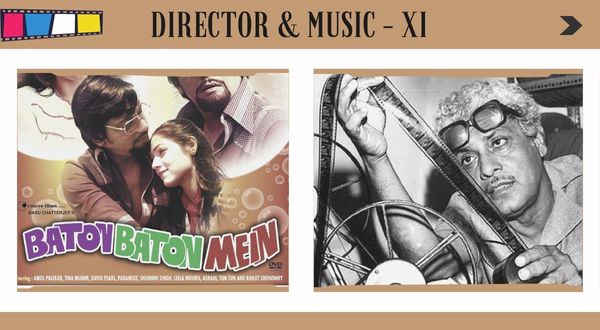
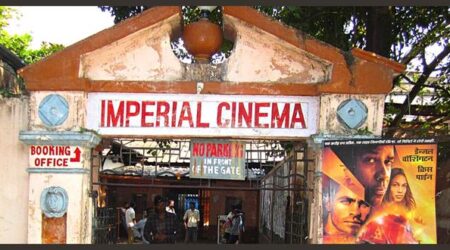
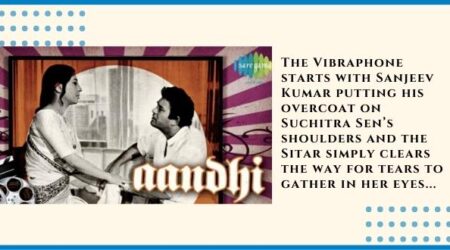
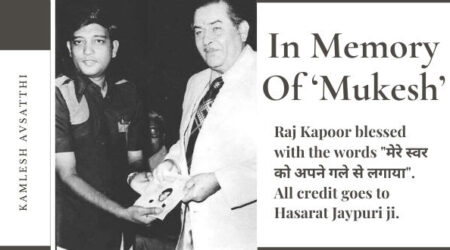


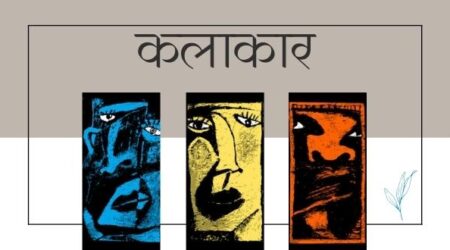
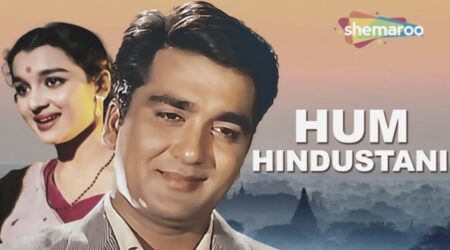
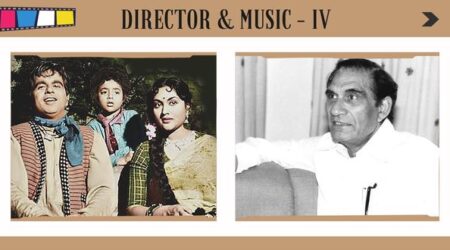
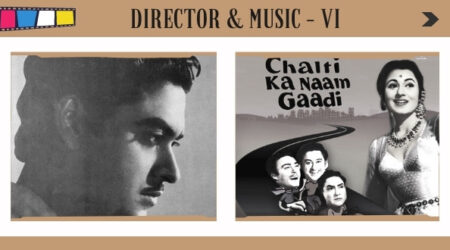
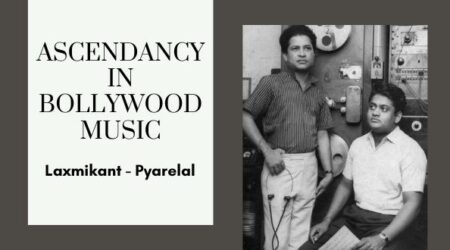

Comments (5)
Informative and enlightening article , not many have written in-depth analysis or inference ….nice one to read and enjoy
Nice in-depth article.
Always a pleasure and delight to read Ramesh’s chronology of events that are always well studied and researched!
I have watched several of the films that Ramesh makes reference to here. However, reading his nuanced details provided me new insights into those films and their accounts. Even prompted me to take a look at some scenes, song sequences to know what Ramesh is alluding to.
Ramesh’s writing engages the reader! Way to go, Ramesh!
As usual, very well researched and very well written. It is quite evident that Rammesh lives and loves films
Excellent!!
You took me back memory lanes..
You should be teaching at a film school!!
Great reading ?